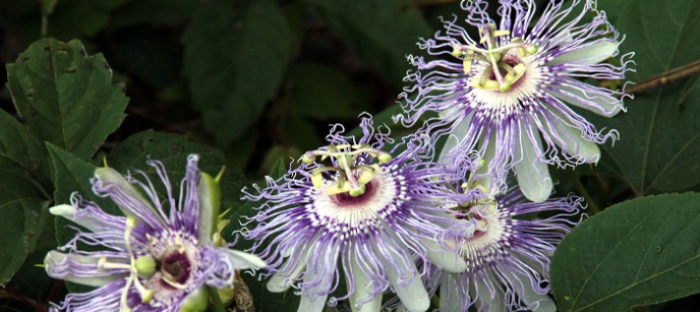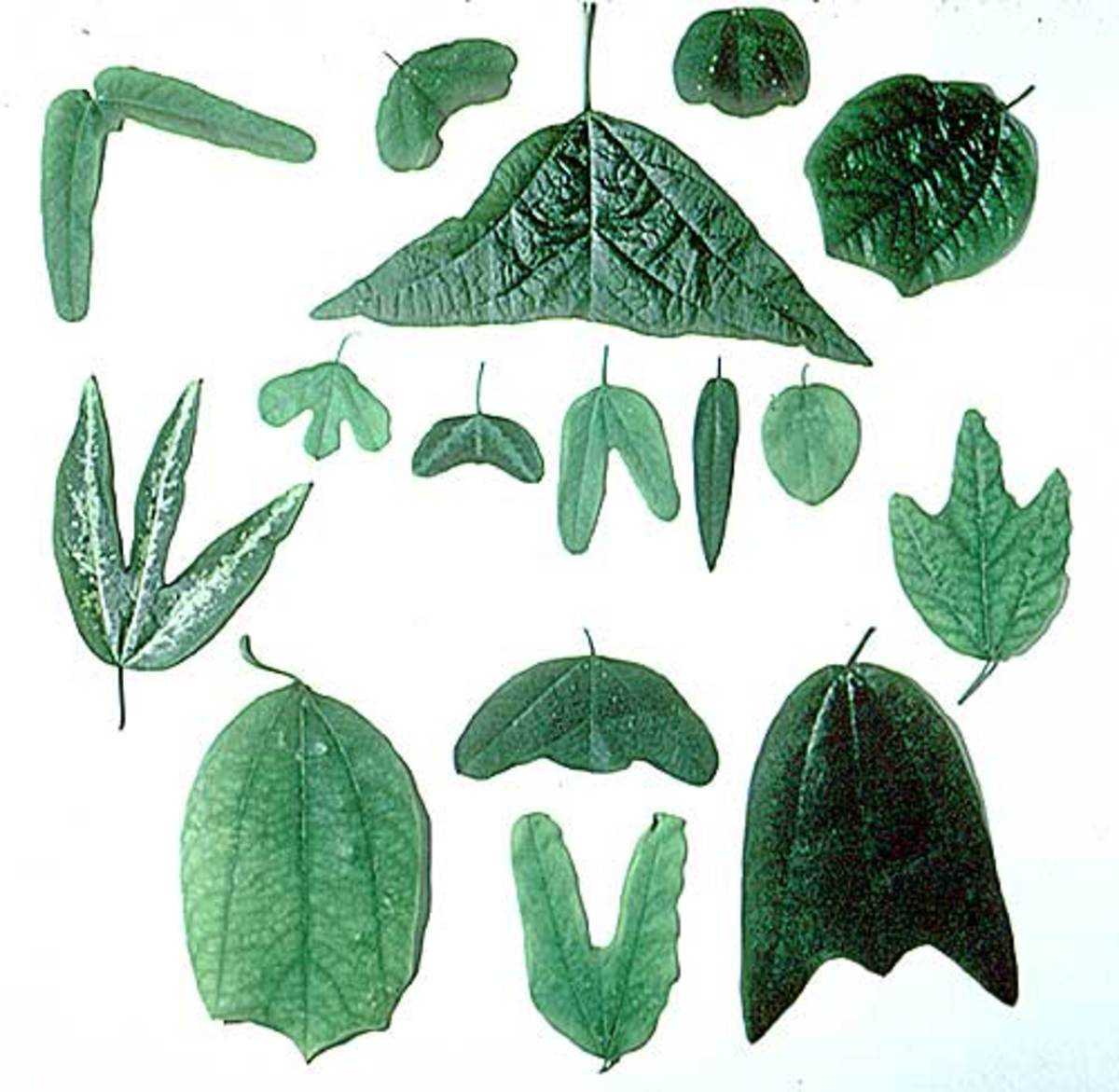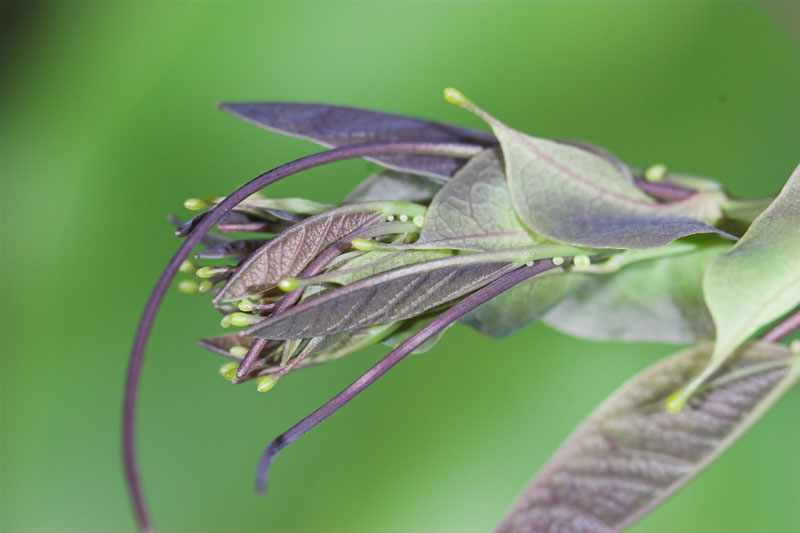Passion Flower Vine Mimicry
Its common to see passion flower combined with other calming herbs such as valerian root and lemon balm chamomile hops kava and skullcap. Several species of passion-flower Passiflora and cruciferous plants Streptanthus decrease their attractiveness to ovipositing female butterflies thus reducing predation from butterfly larvae by producing pigmented callosities that mimic the eggs of those insects.
The above ground parts are used to make medicine.

Passion flower vine mimicry. You will want to use some compost as well as this will help retain a bit of that moisture. The passion flower vine has evolved small yellow spots on its leaves. This genus is distributed throughout the tropical and subtropical regions of the New World from South America as far north as the southern United States.
Two applications of a well-balanced fertilizer per year once in early spring and one in midsummer are all the passion flower care youll need. These look like the eggs left behind by butterflies. Passion flower is a climbing vine that is native to the southeastern United States and Central and South America.
Many plants in the species are native to North America. The remarkable thing is that some species of the vine now have features that appear to mimic the distinctive bright yellow eggs of the butterflies Gilbert 1982. Passion flower plants need a soil pH balance that is in the neutral range and can be anywhere from 61 to 75.
The Dominican monk Simone Parlasca clearly sketched passion fruit vine emphasizing the symbols of Christs passion we find in the flower. One year later another sketch by Eugenio Petrelli on the frontipiece in a book by Antonia Possevino made the symbols even more distinct. Some flowers will have alternating colors that appear as bands on the petals.
Guide the plant on to the support with a garden cane. The plants are self-clinging thanks to tendrils so when mature they wont. They are mostly tendril-bearing vines with some being shrubs or treesThey can be woody or herbaceousPassion flowers produce regular and usually showy flowers with a distinctive coronaThe flower is pentamerous and ripens into an.
You can train passion flowers up a pergola obelisk or galvanised wires run across a wall. Passiflora known also as the passion flowers or passion vines is a genus of about 550 species of flowering plants the type genus of the family Passifloraceae. Prior to ovipositing females visually assess the egg load on individual host plants avoiding parts that are already occupied.
Common names are maypop apricot vine passion vine and passiflore. And Passiflora incarta is a common flower of the American southeastern states. The larvae of these butterflies eat passion flower vines.
Passion flowers have an interesting history and an attention- grabbing bloom. Plant passion flowers in well-drained soil in full sun in a sheltered spot such as the foot of a sheltered sunny wall. The remarkable thing is that some species of the vine now have features that appear to mimic the distinctive bright yellow eggs of the butterflies Gilbert 1982.
A perennial climbing vine passion flower is typically grown in Europe but is native to the southeastern parts of America. Tropical passion flowers need full sun and well-drained soil. The flowers are generally a purple color but can range from white to dark lavender.
Heliconius egg mimicry yellow egg-like structures or spots about 1 mm diameter on the leaves stipules bracts tendrils etc and growing tips as shown above on P. Heliconius comprises a colorful and widespread genus of brush-footed butterflies commonly known as the longwings or heliconians. These notable vines are great to grow as attractive screens floral cover-ups or simply over an arbor as decorative shading.
Since growing passion flowers can reach 20 feet 6 m in a single season this die-back will help keep the vine under control. This model was widely used in pamphlets of the time. The passion flower is a vining perennial meaning that it comes back year after year if taken care of properly.
Mimicry Some plants have evolved the ability to mimic what is around them. The vines will also need some trellis or something to grow onto as they will vine upward as they grow bigger.

Mimicry And Deception In Animals And Plants A Particular Group Passionflowers

Passiflora Poslae Passionflow Co Uk

Butterflies Passion Flower Passiflora Pests And Pollinators Heliconius

Butterflies Passion Flower Passiflora Pests And Pollinators Heliconius

Passion Flower Mimicry Webecoist

Butterflies Passion Flower Passiflora Pests And Pollinators Heliconius

Growing The Native Passionflower Passiflora Incarnata Dave S Garden

Butterflies Passion Flower Passiflora Pests And Pollinators Heliconius

Passionflowers And Butterflies A Love Hate Relationship Osa Conservation

The Many Disguises Of The Passion Flower Passiflora Hubpages

Passiflora Don T Forget The Roundabouts

The Many Disguises Of The Passion Flower Passiflora Hubpages

These Plants Are The Masters Of Mimicry Blog Nurserylive Com Gardening In India
![]()
Passion Flower Passiflora Cuneata The Leaves Of This Species Exhibits Butterfly Egg Mimicry Small Dots That Deter Heliconius Butterflies From Lay Stock Photo Alamy

Butterflies Passion Flower Passiflora Pests And Pollinators Heliconius
Passionfruit Randy S Tropical Plants

Passiflora Don T Forget The Roundabouts

Butterflies Passion Flower Passiflora Pests And Pollinators Heliconius

Post a Comment for "Passion Flower Vine Mimicry"